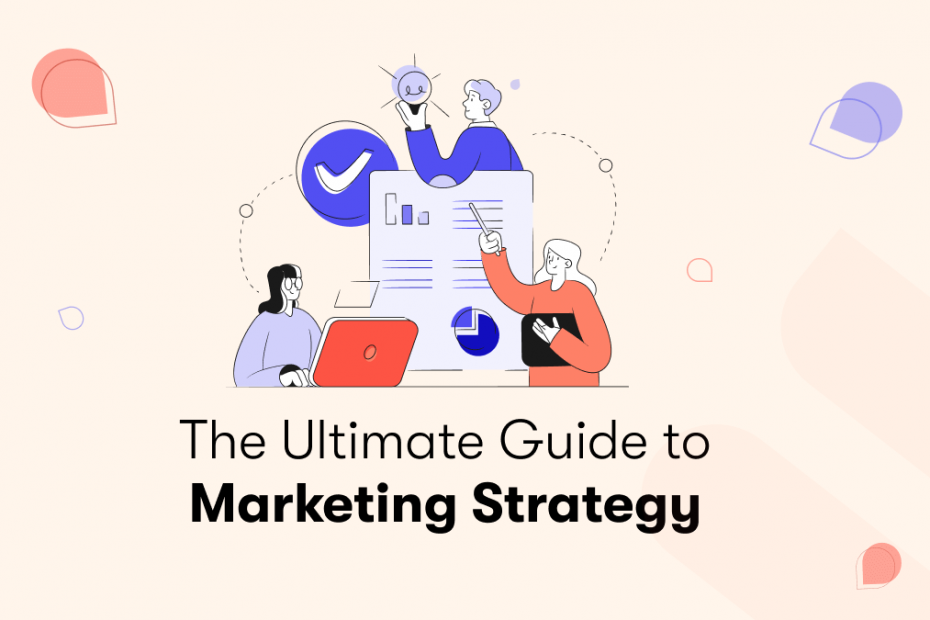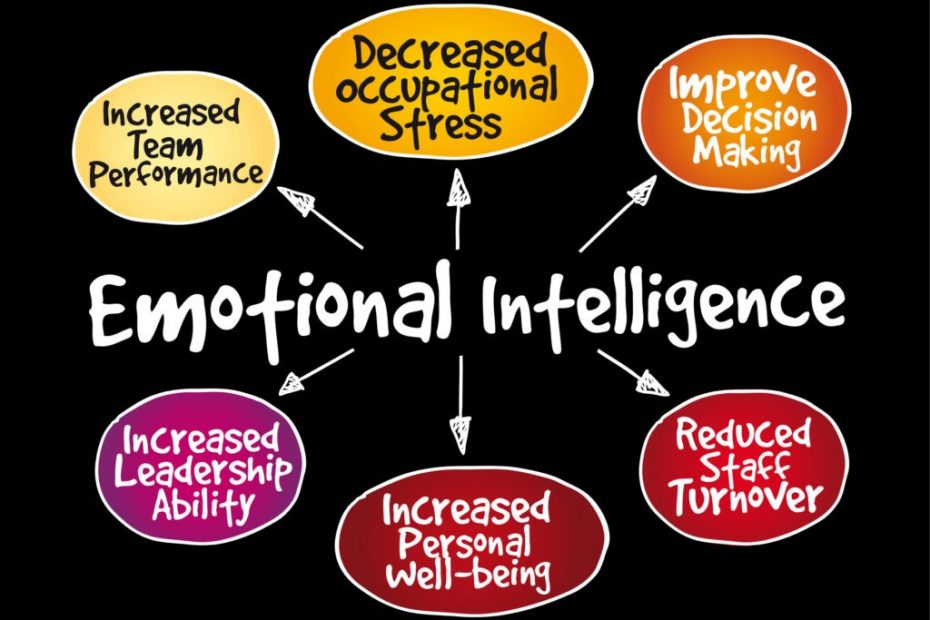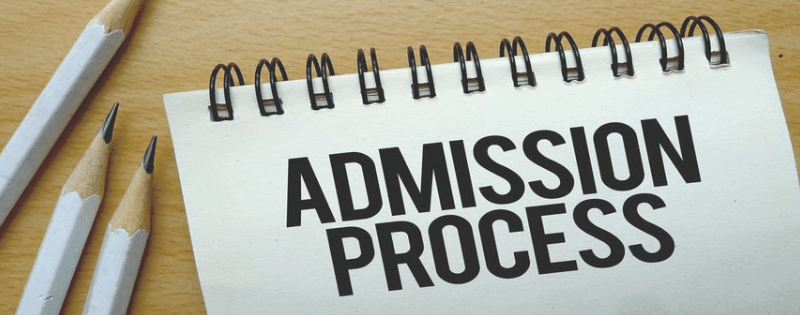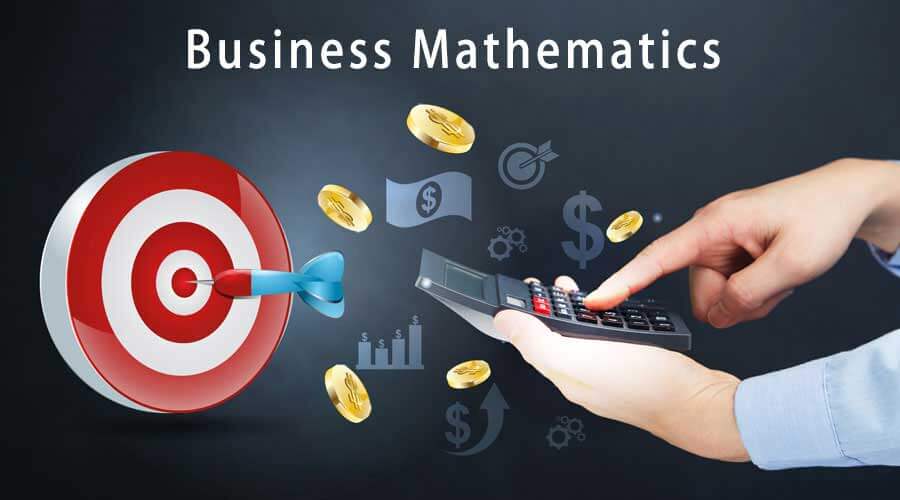Part A
Step 1
Question 1
Woolworth group limited is the largest Australian supermarket grocery chain. It operates
around 1076 stores in Australia. It deals in groceries, Foods & Vegetable, Fresh, Pantry,
Drinks, Liquor, baby products, health & beauty & household products. It has 14.6 million
regular customers & Around 5,000 online customers. Its business value is $ 34.6 billion
Woolworth’s strategy is based on the following 3 things:
(A) Continuous Growth: Woolworth tries to do innovative things to fulfill the need of customers
(Westwood, 2013).
(B) Providing offers: Woolworth try to improve their core offers. So that customers will buy to
prefer from them
(C) Improving the efficiency of work: Woolworth tries to improve the efficiency of the work.
So that it can deliver the best service to the customers.
Question 2
Woolworth uses its marketing strategy effectively so now ithas captured the highest market
share compared to other supermarkets. It follows the STP (Segmentation, Targeting, and
Positioning) approach for its marketing strategy.
Segmentation: In this strategy, the company divides its total target market into small markets
based on different criteria like Geographical, Demographical & Behavioral. Demographical
criteria are based on the following points: Gender, Age, or Income level. Geographical
criteria are based on the location of the business and Behavioral criteria are based on those
people of prefer quality products.
Targeting: In these criteria, we selected the final target market depending on their age, Taste
& their gender it also includes the geographical criteria.
Positioning: In this criterion, company try to get the comparison with its competitors
according to position, price & quality of product.
Question 3
Every Business performance depends on its SWOT analysis (Strength, Weakness,
Opportunity & Threat)
Strength: Woolworths is one of the oldest companies which introduce the modern retail
trade. It’s a well-known Retail company of Australia which has 900+ stores, It has more than
1, 00,000 + employees. & $34.6 billion market value. It is a very famous brand name which
is famous for its efficient operations (Westwood, 2013).
Weakness: The main weakness of Woolworth is that its approach is very low in the global
market.
Opportunity: It has a wide opportunity to expand its business in geographical locations. As
we know that its well-known brand so it can promote through advertising, & promotions. It
can also promote it through the franchise model.
Threats: The threats depend on the market condition like rising the cost of raw materials of
food & non-food products which impact company profit. Another threat is economic
recession. another threat is the competition from the international competitor.
Question 4
The company makes the strategy to develop the organization’s capabilities for business
growth & success. Woolworth tries to implement their Green refrigeration technology
through which perishable goods can be stored for a long time. Capabilities is kind of skill of
the organization through which we can use the resources of the company to increase the
productivity of the organization. Capabilities of Woolworth are:
A) Providing the customer service efficiently to assist them to choose the right product related to
their needs.
B) Another capability of Woolworth is the availability of stock.
C) The most effective is its marketing capability to ensure that business runs smoothly&
efficiently.
External Business Environment
Question1.
Business market growth depends on its total sales. Growth can depend on many factors like
when sales increases constantly we need to fulfill the requirements related to stock
availability, Stock management, Cold storage, follow FIFO methods (First in First out).
Another factor is market competitors & their strategies that will affect business. So we need
to focus on the quality of products also rather than their quality.
Question 2
Labor force participation of people of a particular age group, education of people, Race &
ethnicity of people’s family structure is some points that may affect the marketing strategies.
Question 3
The External Business environment may affect the marketing. We need to get the information
about competitors in the market Like their offers, their strength, Weakness, etc So that we can
get the information that will help to grow the business. Also, the company needs to set a
benchmark strategy for itself so that company will try to improve its service according to it &
which will help to achieve the benchmark which has been set for company growth.
Question 4
The external business environments which can directly or indirectly affect are:
Customer’s trend: We need to do marketing according to customer needs & trend. Nowadays
most of the company does surveys to know the taste & preferences of customers. It depends
upon the Government’s activity & demographic changes like new place & new opportunity
etc.
Question 5
Opportunities presented
By the new technologies
Nowadays most of the company does their marketing strategy according to market trends like
Social Media, Users survey, Data Analytics, etc. These are some tools through which we can
get to know the detail about customers’ preferences. We can promote the products & services
through social media which is very trendy nowadays. We can get the data about people like
& dislike through which we can get to know about their choice & their need. So that
company will serve the products & services according to their need.
Step 2
Question 1
The opportunity or success of any product or company is based on the Internal & External
environment.
Factors that relate to the External Environment are:
Political changes are like any agreement related to trends. Social factors like age factors
changes in their lifestyle etc. Economic factors like Exchange rates & interest rates.
Technology factors like new material or any equipment, Environment factors such as
environmental law and its impact on the environment.
Factors that relate to the Internal Environment are:
SWOT Analysis of any company like its (Strength, Weakness, Opportunity & Threat)
These are 4 main things that will affect the company’s internal environment.
Question 2
A list of new innovative marketing strategies
a) Try to upload the educational content related to the products like its origin, taste types,
benefits, etc.
b) Provide solutions 24*7 related to customer queries & help
c) Keep promoting the new products & provide the discount & offer information related to
products on social media OR on the Company’s website
d) Reward to loyal customers to show your appreciation who have been associated with the
company for very long time
Question 3
The marketing channels and distribution networks will use for marketing communications
and materials are Print media, TV advertisement, and Marketing on Social media platforms.
We can promote our product or company through local news channels, & through the online
surveys, we can enhance the skill of marketing.
Question 4
Every company should have to run the business according to its ethics & government laws if
it wants to succeed or Sustains in the market for a long time. A company that follows the
Legal rules & ethics will help to improve its brand values. It also creates a good image in
customers’ minds. It generates the faith of customers to keep doing business with that
company because they know about the ethics & law which the company follows to create its
brand image.
Question 5
A stakeholder is a kind of individual or a group who has direct or indirect Stakes in the
company Consultation with stakeholders is meant to inform the public about plans for
upcoming projects. Stakeholders can be (Owners, Employees, Managers, Shareholders,
students, etc.) Stakeholders can beneficial for decision-making of any project they eill help &
assist with their ideas & feedback related to the project. So its very necessary to take
consultation with stakeholders.
Step 3
Question 1
Before prepare any marketing plan we need to observe some point like. We need identify the
reason of marketing like why it is needed & the key points of marketing related to any project
& services we need to highlight those key points, which will help to focus on successful
marketing plan. Some essential points which will useful for marketing are : Marketing
Strategy- Before starting any marketing we have a better strategy includes Target Customers,
Age factor, Their like, Dislike, Consumable demanding products & it also depends pn
geographical factor like their location etc. Budget- We have proper budget related to
marketing which we have decide during the preparation of Strategy, Timeline- We need to
decide the timeline of marketing in which we have to complete it.
Question 2
We can provide the opportunities to colleagues by deciding their duties during the marketing
campaign. We need to observe that which colleague will do better in which segment we need
to identify its first then divided their duty accordingly. Offer them a reward or prize by doing
essential work so that colleagues will be happy to perform this task. It can also improve their
productivity related to work.
Step 4
Question 1
Evaluation criteria will depend on the following factors:
Evaluate the return on investment – We need to evaluate that the money which we used to
market the product which will increase the profit of the business or not.
Review the numbers of sales figures – Identify the monthly sales to compare with another
sale for the same month or the previous month.
Taking the feedback from outside people- Conduct a feedback survey from outside people
by asking about the quality of the product
Keep eye on Competitors: After completion of marketing, we need to keep eye on
competitors. Ensure they are not copying your ideas and strategy also keeps a look at their
business to get to know about the effect of the marketing campaign.
Question 2
Methods for success evaluation of benchmarking are:
Create a future goal & work accordingly to achieve them.
Review on total budget for marketing
Making an Effective & unique strategy that will surely give the best result.
Check Performance – Performance can be checked through KPIs by comprising to the current
cost & previous data in figures
Question 3
To evaluate the benchmarking of marketing we need a time frame in which these evaluations
will be conducted. We need to prepare a time Frame strategy to evaluate it.
Question 5
Proper communication should be required during the evaluation of marketing. We need to
compare the previous data with a new one in that if we need any suggestions or changes
related to the product we can apply the same (Chernev, 2020).
Step 5
Question 1
Set your Goal of marketing
Prepare the marketing budget
Conduct the research related to marketing
Identify the Target customers
Analyze the report
Prepare implementation of schedule
Evaluate the process
Question 2
First, we have to look at the type of data whether it is qualitative (Contextual) or quantitative
(Numeric). Data can be taken through Conducting Survey, Feedback, Through online
tracking & social media.
Data can be monitor through its life cycle.
1 Generate the data
2 Collection of data’
3 Processing of data
4 Storage of data
5 Management of data
6 Analyzing of data
7 Interpretation of data (Đokić, 2016)
Part B
Report based on marketing activities
The research was conducted because the company wants to evaluate the sales figure & to
create the brand image of the company in the customers’ minds (Chernev, 2020).
To implement any marketing plan company need to observe some factors. We needBefore
preparing any marketing plan we need to observe some points. We need to identify the reason
for marketing like why it is needed & the key points of marketing related to any project &
services we need to highlight those key points, which will help to focus on a successful
marketing plan. Some essential points which will be useful for marketing are Marketing
Strategy- Before starting any marketing we have a better strategy including Target
Customers, Age factor, They’re like, Dislike, Consumable demanding products & it also
depends upon the geographical factor like their location, etc. Budget- We have a proper
budget related to marketing which we have decided d during the preparation n of the
Strategy, Timeline- We need to decide on the timeline of marketing in which we have to
complete it. Identify the reason for marketing like why it is needed & the key points of
marketing related to any project & services we need to highlight those key points, which will
help to focus on a successful marketing plan. Some essential points which wibell useful for
marketing are: Marketing Strategy- Before starting any marketing we have a better strategy
includes Target Customers, Age factor, They’re like, Dislike, Consumable demanding
products & it also depends upon the geographical factor like their locat, ion, etc. Budget- We
ha have a proper budget related to marketing which we have decided on during the
preparation the of Strategy, Timeline- We need to on decide the timeline of marketing in
which we have to complete it.
The research was conducted based on the internal & external environment for Internal we
take sales figures to find the difference & for External we take online surveys to know the
brand awareness among people.
The main reason to conduct the marketing activities is to know the customer feedback, their
lifestyle, their trends, etc. Also on other hand to know the internal performance of the
company also, which are as follows-
Factors that relate to the Internal Environment are:
SWOT Analysis of any company like its (Strength, Weakness, Opportunity & Threat)
These are 4 main things that will affect the company’s internal environment (Đokić, 2016).
Factors that relate to the External Environment are:
Political changes are like any agreement related to trends. Social factors like age factors
changes in their lifestyle etc. Economic factors like Exchange rates & interest rates.
Technology factors like new material or any equipment, Environment factors such as
environmental law and its impact on the environment.
We take the sales figure & feedback of customers to analyze the results.
The overview to develop any marketing strategy is to evaluate the company’s internal factors
like Strengths, Weaknesses, Opportunities, and Threats. To evaluate the external factors also
like: to know the lifestyle of the consumer, and their taste, &find the new opportunities to
establish themselves as a market leader (Đokić, 2016).
Part C
Report presented to the Stakeholders of the company
Based on the ongoing evaluation, which includes the feedback of customers & analysis sales
figure & report it has been noticed that to conducting these evaluation marketing it has
impact on the company on positive way. Which result to improve the sales figure of the
company products & create its brand image successfully in customer? They are happy with
company’s product & services.
On the other hand there is a weakness of company which has been found during evaluation is
that we are lacking in approaching the global customers If we try to approach in global
market that will increase the more revenue for the company.
References
Chernev, A. (2020). The marketing plan handbook. Cerebellum Press.
Đokić, I. (2016). Planning of integrated marketing communication as part of a strategic marketing
plan. Anali Ekonomskog fakulteta u Subotici, (36), 79-93.
Sarsby, A. (2016). SWOT analysis. Lulu. com.
Teoli, D., Sanvictores, T., & An, J. (2019). SWOT analysis.
Westwood, J. (2013). How to write a marketing plan. Kogan Page Publishers.
Question 1
Budget–It is the estimation of the specific amount of money or the plan required for a specific charge of survival or to be utilized for a particular objective (Carliner, 2015).
Business Plan – It is an important written text that gives an overview and description of the future of the organization.
Coaching – It is the progressive method of interacting and working with other individuals.
Colleagues–These are coworkers or associates usually in the civil or professional office and frequently of the same status.
Consultation–It includes assisting to overcome, address and identify obstacles to attaining the objectives of the organization.
Contingencies – It is the possible negative occasion that might happen in the upcoming period like natural calamity, recession in the economy etc.
Contingency Plans – It is the strategy or plan for how the enterprise will respond to crucial business or essential incidents that hit the novel plans or strategies off way.
Employee Induction/On boarding–It is the process that must occur when an individual first begins the new employment.
External Stakeholders – It includes customers or clients, shareholders and investors, agencies of government and suppliers.
Financial Information–It is the data related to transactions of money of the business or individual.
Human Resources–It is the business department in the organization that is accountable for everything related to work.
Intellectual Property–It means the mind’s creations like inventions; artistic and literary symbols, designs and works, images and names utilized in trade and commerce.
Internal Stakeholders–These are the individuals whose main interest in the organization arrives through a straight relationship like investment, ownership or employment.
Mentoring–It is the relationship or association between the experienced person of business i.e. mentor and the employee or owner of business i.e. mentee.
Operational Performance – It is the interaction between many units of the organization and the capability to generate large output jointly (Carliner, 2015).
Organizational Policies and Procedures–It is the set of interior guidelines that develop the expectations and rules of the organization.
Performance Management System–It is the management tool of a business that aids managers evaluate and monitoring the work of employees.
Performance Monitoring Systems & Processes – These are the processes and systems for setting up the objectives of the organization, monitoring processes and actions utilized to attain these objectives and making ways for all managers for attaining those objectives efficiently.
Personnel – These are the employees or staff members who follow the instructions of the manager usually at the organization.
Policies and Procedures–These are set of guidelines or rules for the employee and organization to specifically follow or to attain compliance.
Problem Solving–It means to form processes that remove or mitigate obstacles that prevent individuals from attaining strategic objectives.
Productivity Plans–These are the innovative plans that individuals develop for boosting their efficiency.
Profit–It is the amount of money the business appeals to after doing activities of accounting for every expense.
Records–These are the documents that accurately record the event, condition or act linked to the business.
Recruitment – It is the process of identifying, screening, on boarding and hiring qualified candidates for the job.
Resource Acquisition (or Talent Acquisition)–This is the process used by employers for interviewing, tracking and recruiting job candidates and then training and on boarding them.
Resources–These are the type of supply that could be strained by the organization or individual for executing and functioning all projects and plans.
SMART Goals–It stands for Specific, Measurable, Achievable, Relevant and Time-Bound.
Strategy–It is the accurate set of objectives, actions and plans that reflects how the organization will specifically compete in the specific market with the service or product.
Strategic Plan – It defines the individual according to their business and then mentions all concrete and relevant actions to obtain the objectives.
Supervision–It is the procedure that includes the manager interacting daily with the employees for reviewing the performance of work.
Suppliers–It is the entity of a business or individual that sells products.
Systems–It is the group of inter-reliant tasks or components that meet the objectives of the business.
Targets–It is defined as to purpose at someone or something specific.
Work Teams–It is the group of workers that effectively work jointly on the task (Reason & Hobbs, 2017).
Question 2
Five elements that must be included in the operational plan are given below:
1. Budget
2. Milestones and timelines
3. Evidence of research
4. Objectives and goals
5. Chain of value
Question 3
Four benefits of workplace consultation are given below:
1. Greater commitment to work
2. Openness and respect among employers and employees
3. It gets a healthier environment for working
4. It gives opportunities to learn(Reason & Hobbs, 2017).
Question 4
These are the computable measure of work performance over a period for a particular goal. These are important in the process of operational planning as they give objective and measurable standards through which leaders of business could track development and execute change.
Question 5
The purpose of the contingency plan of business is to accurately maintain continuity of business after and during the troublemaking incident.
Question 6
Four possible options of risk treatment in the contingency plan are given below:
1. Avoidance
2. Reduction
3. Transfer
4. Acceptance
Question 7
Two alternative approaches are given below:
1. Define strategic goals
2. Define effectiveness (Wong & Hernandez, 2012).
Question 8
SMART goals are:
1. Specific
2. Measurable
3. Attainable
4. Relevant
5. Time-bound
Question 9
Five types of internal channels of communication are given below:
1. Intranet
2. Emails
3. Internal podcasts
4. Software for video conferencing
5. Software of private messaging(Wong & Hernandez, 2012).
Question 10
Advantages of Internal Recruitment:
1. Decrease time for hiring
2. Shorten times of on boarding
Disadvantages of Internal Recruitment:
1. Create anger among managers and employees
2. Restrict the pool of candidates
Advantages of External Recruitment:
1. Enhance diversity
2. Reduce tension among employees
Disadvantages of External Recruitment:
1. Extra training
2. Increment in costs
Question 11
These are the rights provided to individuals over the specific creations of their particular minds.
Question 12
Three methods that can be utilized are given below:
1. Self-assessment
2. 360-degree feedback
3. Management by goals
Question 13
Three external factors are given below:
1. Technological and scientific progress
2. Micro and macroeconomics
3. Competition
Question 14
The types of legislation are given below:
1. The fair labor standards act
2. The occupational health and safety act
3. The consumer product safety act
4. Laws of tax (Martens, 2012).
Question 15
The policies and procedures are given below:
1. Accurately define the ultimate objective or vision for the plan
2. Review the smaller objectives for resources, team and budget needed for implementing the plan
3. Assign resources, members of the team and budgets
4. Monitor the growth of the plan’
Question 16
Two types of financial reports are given below:
1. Profit and loss statement
2. Balance sheet (Martens, 2012).
Question 17
Five situations are given below:
1. While making changes in business
2. When an organization suffer losses
3. Renovation, relocation or modification of facilities
4. Changes in systems, procedures and policies
5. Reorganization of the business department
Question 18
Four stakeholders are given below:
1. Internal clients
2. Managers
3. Team members of the project
4. Manager of resources
Question 19
Two ways are given below:
1. Consultation on particular venues, projects or developments
2. Enduring consultation for monitoring and tracking perceptions of stakeholders
Question 20
The operational plan should be accepted before being executed as presenting the offer accurately is important to achieve acceptance for the specific plan from the accurate party.
Question 21
Training, coaching and mentoring the new employees should be considered while employing or inducting staff into innovative roles (Kerry & Mayes, 2014).
Question 22
Five-element items are given below:
1. Information about employee
2. Contract of employment
3. Description of position
4. Choice form of superannuation standard
5. Declaration form of Australian tax file number
Question 23
The benefits of coaching and mentoring are given below:
1. Better skills in management
2. Enhanced productivity
3. Maximized confidence
Question 24
An operational plan concerning organizational objectives and goals covers one year and these objectives and goals arrive by analyzing the operations of the business.
Question 25
Four examples are given below:
1. Repair
2. Maintenance
3. Recycling
4. Manufacturing (Kerry & Mayes, 2014).
Establish Operational plan
For the successful operation of any business, it is important to develop plans which will drive direction and support the business in achieving its goal and objectives.
Outline the purpose of the operational plan about “OZeeFOODS”
Purpose is to adopt a policy in which they purchase fruit and vegetables only from Australian farmers.
The next purpose is to market all products under only their brand name “OZeeFOODS”
Resources for this operational plan are given below:
a) Individuals for the business
b) Currency
c) Physical resources
1) Machinery for goods
2) Vehicles for loading the goods
3) Storage rooms for storing foods and vegetables
Financial resources are:
Current financial support is from three investors who invest $2,000,000 in the company.
Capital
Current and past year expenses
Funds
These all resources are important for implementing operational plans.
As an operation manager of the company, I would like to discuss the developing plan with team members and company stakeholders so we take effective decisions on the development of an operational plan.
This consultation will be conducted on 2-6-2022 in the conference room by discussing this plan.
This plan will be approved by “The management committee”. They approve by response mail or by conducting meetings with us for giving their thoughts and approved the plan.
Once the company got approval from the management committee the company transferred mail to team members and inform them about the approval of the plan and now, they can implement the plan in the organization.
The key performance indicator which is needed for the operational plan are given below:
Returns per client
Client’s and retailers’ satisfaction
Revenue growth
Client retention rate
The revenue margins
For measuring progress towards the goal then firstly record and plan what task will be done at what time and with what resources. The company used planner advice as he monitor the progress of every task.
There is a process that identified the progress of goals:
1) first measure the goal
2) How far you have come
3) Identify the distance to achieve the goal
2. Appendix1: Contingency plan template
Contingency Plan
Company name: – “OZeeFOODS”
Name of a person developing the plan: operational manager
Who was consulted as part of this plan?Name/s- Oliver
Position- stakeholder
Riskidentified: It is that process from which a company determines the risk that potentially stops the program. So, the identification of risk is a must In the organization.
Strategies/activitiestominimizetherisk Bywhen Bywhom
The first activity is to find the Risks Risk management team
Then analyses the risk Risk management team
Managing risk Risk management team
Develop and follow a Risk management plan in the workplace Risk management team
Assessment task 2.2- IMPLEMENTATION STRATEGY AND ACTION PLAN
Company needs to recruit 50 staff for a variety of roles. For recruiting them there is the step which is followed by the company are:
Recruiting;
1) Find needs for hiring
2) Proper job description
3) Interviewing
4) Proposal of employment (Harish, & Kumar 2014)
Now for the new staff company develop a training program for them which are given below:
1) Establish each employee’s procedures
2) All managers should use the new signing training agenda
3) On boarding them
4) Trained them on culture not only topic
The communication process develops for employees:(Harish, & Kumar 2014)
Open communication for them
Teamwork
Shared their ideas
Induction t raining is the process in which the company welcomes the employee and shows policies of the company and their role. This process helps the employee to know everything about the organization. The induction process followed by the company is:(Blencowe, et al., 2015)
1) Companies general training program
2) Follow-up induction program
3) Specific Orientation program (Blencowe, et al., 2015)
Physical resources are a touchable item which is used in the operational plan of the business. Physical resources are a must for every organization the physical resources are:
Equipment’s
Building and land
Assets
Facilities in the organization
Materials
Companies’ infrastructure
Now the plan strategies for using physical resources are:
a) Always be sure that your physical resources are efficient
b) Screen the quality of the resources
c) Identify which physical resources are used for what plan
d) now deal with potential momentous
It is very necessary for the implementation of the plan because without resources no one can do work, without resources it is not possible to achieve the organization’s goal. Without resources how could they produce goods and where they store them.
3) Protecting your brand name (“OZeeFOODS”) is also critical therefore we develop some processes to maintain your brand name is (Choong, et al., 2017)
a) Confirm that every person in the company understands the significance of brand identity.
b) Save the messaging reliable
c) Placed the logo of your brand everywhere
d) Always stay active
f) Brands have to familiarize overtime
g) Have target spectators in mind
h) Repurpose your content (Choong, et al., 2017)
4) Policies and procedures followed by fruit and vegetable company are given below:
a) Bring all fruits and vegetables from Australian farmers.
b) Sale all fruits and vegetables in canned
c) Set quality standard
d) Maintain a risk management plan
e) Always clear objective
f) Monitor progress regularly
g) follow rules and regulations by everyone
These policies and procedures are directly related to the operational plan, it is very helpful for an organization to achieve goals.
Appendix2: Action Plan Template
Milestone: Action and/or objective(to achieve operational aims of physical& human resourcing)
Date
Person responsible
Budget & resources
Correct distribution of workforce
(Peykari, et al., 2017)
1-06-2022 Manager of company $5000
Manpower is Resource
Monitoring process 2-06-2022 Senior manager $4000
Monitor employees by monitoring the system
Provide training sessions 4-06-2022 Trainer $5000
By online and face to face training
Maintain teamwork 7-06-2022 Team leader $4000
Develop Trust
Control overhead cost 9-06-2022 Financial officer $5000
By Implementing a control cost system
Maintain a Risk management plan
(Peykari, et al., 2017)
11-06-2022 Risk management Team $6000
By Risk System
Increasing sale 13-06-2022 Sales executive of firms $4000
By online sale
Budgetary and financial performance:
Past budgetary and financial performance Current Budgetary and financial performance
Focused on profits and expenses Focused on financial and earning area
Not flexible Current budget flexible
More waste financially Control waste financially
Companies’ key performance indicators are: (Rakhshani, et al., 2019)
a) Monitor revenue growth
b) Profit margins
c) Client holding
d) Satisfaction of customer
e) Revenue per client (Rakhshani, et al., 2019)
For monitoring profit and target, the company develops Profit and loss statements and then compares them with the past year’s profit and loss statements, do changes in the finance of the business.
When staff is underperformance then we saw some problems such as:
a) Complaints are increasing from clients and co-workers
b) Deadlines are missing
c) Work completed with poor quality
d) Targets are not achieved
As an operational manager I manage staff underperformance by following some steps:
a) Identify the problem
b) Assess them
c) Conduct meeting
d) Develop an action plan
e) Meeting for studying performance
4) For staff performance as an operational manager I develop a performance management plan from that we know the regular performance of each employee. By monitoring their activity, their interest, and the progress of the project and maintaining reports with the human resource manager by giving them staff, and performance data.
5) Milestone achievements against the target (Yasuhara, et al., 2020)
a) Profitable business
b) Ahead authority
c) Train hard teams (Yasuhara, et al., 2020)
Performance against targets:
a) Improve skill
b) Developed teamwork environment
c) Value of time
6)Monitoring activities Dates Resources
Skill development Within 5 days Log collection
Communication Within 4 days Kernel monitoring
Team-building Within 5 days File capturing
Training Within 7 days Video session
Changes required in the plan are:
a) Change marketing strategy
b) Buy Fruits and vegetables from an Australian farmer
c) Changes in leadership
d) Maintain or change the culture
8) Implementation of documents: By receiving approval from stakeholders implement the plan according to the organizational requirements which are:
1) Clear objectives of the organization
2) Workforce team
3) Maintain quality standards
4) Complete declines
9) Recommendations for operational improvement for “OZeeFOODS” are:
1) Train all employees
2) Order employee
Assessment 2.4
Meeting
Meeting objective: discuss and Identify underperformance or issues they are facing
Meeting Place:
Meeting Date:2-06-2022
Meeting Attendees: Colleagues
Operational manager- Hello everyone, good morning all of you I hope you all are good.
Colleagues- good morning, sir
Operational manager- This meeting is conducted for informing you that the operational plan was first implemented one month ago and the problems are arising.
Colleagues- ok sir
Operational manager- we survey and find a problem that affects our project are:
1) Waste
2) Performance is not monitored regularly
3) Overhead cost is an increase
4) Cash flow is not stable
Colleagues- ok sir, what do we do now.
Operational manager- This meeting is conducted for informing you that this problem is affecting our company’s growth. Now you are getting my point, identify a solution and implement them.
Colleagues- ok sir
The company develops a Support plan for individuals and the team: (Kitchener, et al., 2018)
All team leader leads their team effectively
Solving their problems fast
Monitor their performance and tell them their mistakes
Maintain overhead costs and reduce them
Maintain stable cash flow(Kitchener, et al., 2018)
Continuous improvement policy that is implemented by the fruit and vegetable company:
1) Firstly, identify problems
2) Develop improvement policies for that
3) Improve time management
4) Relational communication
5) Battles resolution
The monitoring process which is used by the company is the Report management mechanism
4) Email
To – stakeholder
Subject – A policy document
Date- 2-06-2022
Respected sir
This email is written to inform you about the continuous policies document which is developed by me for improving the performance so that we increase our sales this year and improve the employee performance. In these policies, we improve time management, communication, conflict resolutions,and all.
The operational plan involved:
Purpose
Financial and physical resources
Communication policies
Growing strategy
I hope I explain my point in Infront of you, if there is a mistake let us know. Give us the approval to implement them.
Thank you
Regards
Operational manager
References
Blencowe, N. S., Van Hamel, C., Bethune, R., & Aspinall, R. (2015). ‘From scared to prepared’: targeted structured induction training during the transition from medical school to foundation doctor. Perspectives on medical education, 4(2), 90-92.
Carliner, S. (2015). Training design basics. Association for Talent Development.
Choong, P., Hutton, E., Richardson, P. S., & Rinaldo, V. (2017). Protecting the brand: Evaluating the cost of a security breach from a marketer’s perspective. Journal of Marketing Development and Competitiveness, 11(1), 59.
Harish, V. S. K. V., & Kumar, A. (2014, February). Planning and implementation strategy of Demand Side Management in India. In 2014 First International Conference on Automation, Control, Energy and Systems (ACES) (pp. 1-6). IEEE
Kerry, T., & Mayes, A. S. (2014). Issues in mentoring. Routledge.
Kitchener, F., Young, R., Ahmed, M., Yang, G., Gaweesh, S., Gopalakrishna, D., … & Hsu, E. (2018). Connected Vehicle Pilot Deployment Program Phase 2, Performance Measurement and Evaluation Support Plan-ICF/Wyoming (No. FHWA-JPO-16-290). United States. Department of Transportation. Intelligent Transportation Systems Joint Program Office.
Martens, R. (2012). Successful coaching. Human Kinetics.
Peykari, N., Hashemi, H., Dinarvand, R., Haji-Aghajani, M., Malekzadeh, R., Sadrolsadat, A., … & Larijani, B. (2017). National action plan for non-communicable diseases prevention and control in Iran; a response to the emerging epidemic. Journal of Diabetes & Metabolic Disorders, 16(1), 1-7..
Rakhshani, E., Gusain, D., Sewdien, V., Torres, J. L. R., & Van Der Meijden, M. A. (2019). A key performance indicator to assess the frequency stability of wind generation dominated power system. IEEE Access, 7, 130957-130969.
Reason, J., & Hobbs, A. (2017). Managing maintenance error: a practical guide. CRC Press.
Wong, K. V., & Hernandez, A. (2012). A review of additive manufacturing. International scholarly research notices, 2012.
Yasuhara, T., Kawauchi, S., Kin, K., Morimoto, J., Kameda, M., Sasaki, T., … & Date, I. (2020). Cell therapy for central nervous system disorders: current obstacles to progress. CNS Neuroscience & Therapeutics, 26(6), 595-602.







